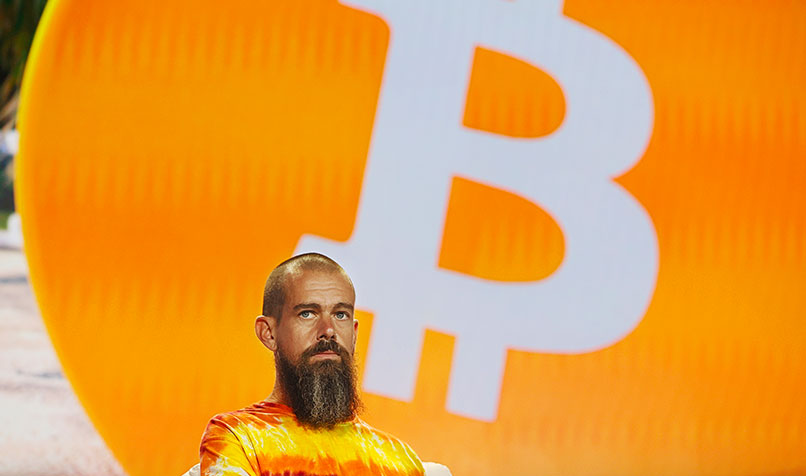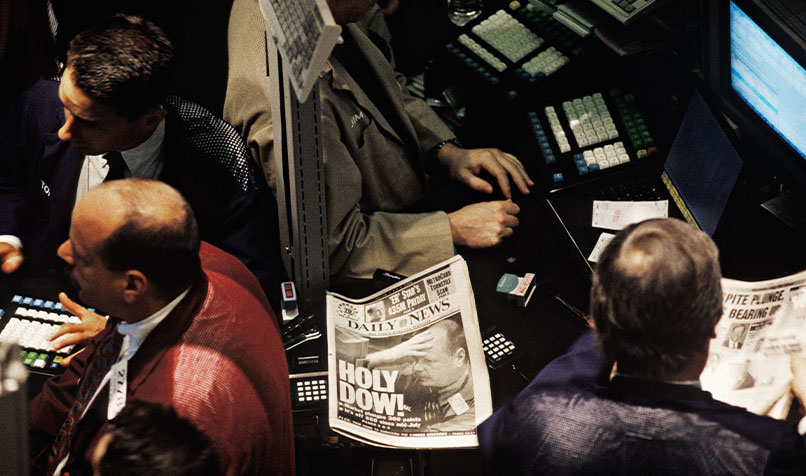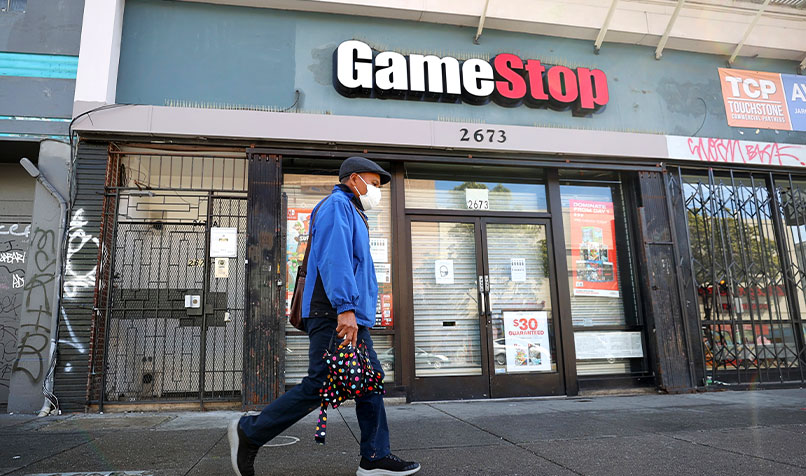Loading component...
At a glance
In January this year, billionaire entrepreneur Elon Musk triggered an investment frenzy with a simple two-word tweet: “Use Signal”.
His note was innocent enough – Musk was telling his 42 million followers to download an encrypted messaging app called Signal – but the tweet was mistaken as endorsement of a small medical device firm, Signal Advance.
Musk’s followers dutifully bought stock in the company, driving its share price up by an astounding 11,708 per cent in just three days.
The Signal tale is just one instance of the power of social media in uniting people from all walks of life, income levels and geographical locations to enact change on a dramatic scale.
This year’s GameStop stock fiasco is another example. The WallStreetBets forum on the Reddit website encouraged retail investors to buy the video game company’s stock, causing its price to surge by 1500 per cent in January and squeezing out short-selling hedge funds.
GameStop’s share price went from a low of US$17 (A$22) to a high of US$483 (A$624), but the bubble was quick to deflate. By the first week of February, the share price had dropped to US$55 (A$71).
Are these examples of market manipulation, rapidly inflating investment bubbles or perhaps a bit of both? Whatever the case, they illustrate the power of social media to rapidly shape perceptions of value among retail investors and move markets to new speculative highs.
The social media effect

Investment bubbles are defined as the swift escalation of an asset price followed by a rapid and often devastating fall. One of the most famous, “Tulip Mania”, occurred in the 1630s, when Dutch citizens rushed to buy rare tulip bulbs in hopes of reselling them for a profit. The bubble burst in 1637, wreaking havoc on the Dutch economy.
Centuries later, the dotcom bubble of the late 1990s and early 2000s saw speculative fever sweep the globe. The NASDAQ Composite Index rose by 582 per cent from January 1995 to March 2000 as investors rushed to buy shares in technology start-ups. By 2002, their losses were estimated at about US$5 trillion (A$6.5 trillion).
Today, social media and technology bring new elements to hysterical investment. Consider the latest craze, non-fungible tokens (NFTs), which represent ownership of unique items, such as art, collectibles or even social media posts.
In March this year, for instance, Twitter CEO Jack Dorsey sold his first ever tweet as an NFT for more than US$2.9 million (A$3.9 million).
Dr Timo Henckel, research fellow at the Centre for Applied Macroeconomic Analysis in the Research School of Economics at Australian National University, describes Bitcoin as “the mother of all bubbles”.
“Bubbles don’t just emerge out of nowhere,” he says. “There is a genuine basis for a bubble, and it usually involves an innovation – some kind of new product or new technology that sparks people’s imagination.
A story is created around it, and people project forward to it being life changing or having a major impact. Today, that story is told and retold via social media.”
Dr Brent Coker, who teaches cryptocurrency marketing at the Melbourne Business School, says much of the cryptocurrency community exists on Twitter.
“Cryptocurrency traders will typically have things like TweetDeck set up to help them organise their topics,” he says. “A lot of price movements in cryptocurrency are based on word of mouth, much more so than traditional stocks.
“There’s an old saying that you never trade the news when it comes to traditional stocks, but my sense is, with cryptocurrency it’s exactly the opposite.
“Everyone’s just looking for news because it is so volatile and so random. Also, the folks that are trading crypto are not really old-school Forex traders or stock exchange traders. They are mostly young, and the first thing they may have traded is crypto, so it’s all about the news.”
The changing concept of value
Growth in asset classes such as NFTs suggests that investors’ perceptions of value are changing. The immediacy of social media also means the mass market of retail investors can be informed and influenced in real time.
Simon Russell, director of Behavioural Finance Australia, says this can play a significant role in individual stock levels.
“It’s quite easy to join the dots between a stock going up a little bit and people thinking, well, there must be something to this, and if everyone else is buying it, it must be a good idea,” he says, observing the sort of “herd movements” triggered by individuals or small groups that can encourage “pump-and-dump” schemes.
Russell adds that taking investment tips from the internet presents a risk of confirmation bias.
“We all live in our own personal filter bubbles,” he says. “The way that our Google searches work, for example, predisposes us to finding stuff that confirms our existing beliefs, rather than things that are going to challenge those beliefs.
"The way that our Google searches work... predisposes us to finding stuff that confirms our existing beliefs, rather than things that are going to challenge those beliefs. It's going to build confidence, and obviously the risk there is that you don't get the contrarian or the alternative views."
“It’s going to build confidence, and obviously the risk there is that you don’t get the contrarian or the alternative views.”
Chris Brycki, founder and CEO of digital investment advisory Stockpot, says the internet has removed geographical barriers, allowing investment bubbles to flourish.
“Even in the late 1990s, the internet allowed a lot of people to congregate together with a similar interest or focus on a particular asset class,” he says.
“They’d all get excited together, and all get fearful together about assets. The same sort of trends that we’re seeing now on Reddit, I remember being pretty identical back in 1999 on other internet forums.
“Obviously, the internet is now more synonymous around the world, so more people are on it, and therefore there’s probably more money that can get jammed into different assets like GameStop.
“Perhaps that’s why the dollar value of moves can be bigger. We’re currently seeing a few pockets of asset classes going up by an astronomical amount, and that gets people interested in markets.”
Cascading bubbles

Investment “bubbles” are so called for a reason – they inevitably burst, often leaving a mess in their wake. Henckel describes a bubble’s “cascading effect”.
“You get the early adopters, who are the big risk takers because they are savvy enough to think that people will latch on to this kind of technological innovation, and they clearly are trying to make a profit,” he says.
“Then, it just trickles through the economy. Sometimes you get a couple of big adopters, like Elon Musk, for instance, who convince the crowds that it’s a good thing, so they start piling in as well. Think about the dotcom bubble. That’s basically how it went as well.”
Henckel adds that the “ma and pa” investors tend to join in at the peak of a bubble.
“They’re the ones who usually get burned when the bubble bursts,” he says.
“I’m not really concerned about Bitcoin right now. Even if it crashes, it’s currently too small a market to have any major ripples in the economy. But you can imagine that if there was an economy-wide frenzy to pile into cryptocurrencies and it was debt-fuelled, it would become a concern.”
Education versus intervention

Datuk Muhamad Umar Swift FCPA, CEO of Malaysian stock exchange Bursa Malaysia Berhad, says the increasing use of social media, online forums and messaging applications has led to the proliferation of “self-proclaimed investment advisers”.
“While these conversations have helped maintain market interest and boosted market vibrancy, we are concerned that investors can be misguided by individuals taking advantage of chat rooms to promote their own agenda,” he says.
“Trading manipulation or ‘pump-and-dump’ schemes, involving the action of promoting a stock to a certain price level or deceiving investors by controlling or artificially affecting the price of a security, is not acceptable and in breach of the rules.”
Henckel describes the recent GameStop price hike as market manipulation, rather than a bubble in the traditional sense.
“Strictly speaking, market manipulation is already illegal,” he says. “The rhetoric around financial markets relies very heavily on it being a level playing field, and when it’s not, it compromises the credibility of financial markets and their efficiency and fairness.
“The thing with bubbles is, should regulators intervene and, in particular, take into account social media?” Henckel asks.
“I think it would be really dangerous to give regulators some kind of leeway in adjusting policy based on what they see happening in social media. I just can’t see how that works in a free-market economy.”
According to Swift, Bursa Malaysia is already working to raise financial literacy levels among Malaysian consumers, while driving retail participation in the marketplace.
“Investor education is an important agenda for sustaining retail activity and improving the quality of activity through enhanced investor protection,” he says.
“Many industry analysts and academic papers have concluded that stock market participation rates would increase considerably if investors were well informed and aware of their risk appetites.”
The challenge is to ensure that retail investors are educated via credible sources, rather than the noise of social media. Even so, Henckel suggests that social media does not create bubbles, but rather speeds up their growth.
“I don’t know if social media necessarily amplifies bubbles, or increases the amplitudes of price movements more generally,” says Henckel.
“It just makes the information travel faster. The current cycles of Bitcoin, for example, are remarkable. I don’t think that Tulip Mania in 17th century Amsterdam was quite that quick.”
CPA Library
Are we in the middle of a bubble?
Several asset classes, including cryptocurrency and even real estate, appear to be richly priced in 2021, but are we experiencing a bubble?
Datuk Muhamad Umar Swift FCPA, CEO of the Malaysian stock exchange, says that, while there is higher participation among retail investors, the current market lacks the “frenzied inflows” of previous bubbles.
“Since last year, we’ve observed a shift in demography towards higher participation by retail investors. While low interest rates have been a factor in this shift, other factors have played a part and set the stage we are in today.
“One, which started more than 10 years ago, is the liberalisation of the brokerage fees, which generally made trading cheaper and more attractive.”
Swift adds that continuous growth, propelled by improvements in the online trading experience offered by broking houses, is also contributing to the growth in retail investors.
“The pandemic-fuelled market volatility brought new investors into the world of stocks,” he says. “Working from home, loan moratoria and higher personal savings levels, as well as social media platforms, have helped accelerate the boom in retail trading.”
Chris Brycki, founder and CEO of digital investment advisory Stockpot, is not convinced of an investment bubble in the Australian market.
“Asset prices are relatively high compared to history, but I haven’t gotten into an Uber recently where the driver has given me a stock tip,” he says.
“I think that relatively high asset prices are more of a function of bond rates. The reaction of governments and central banks to COVID-19 was to bring interest rates to zero and then print lots of money, and that’s really what’s inflated asset prices, but they are all relative to each other.”

